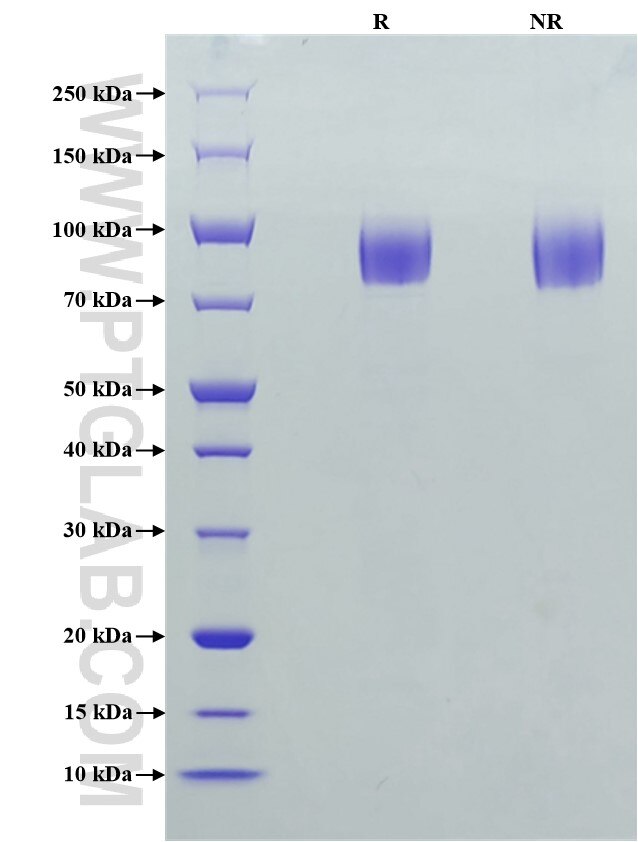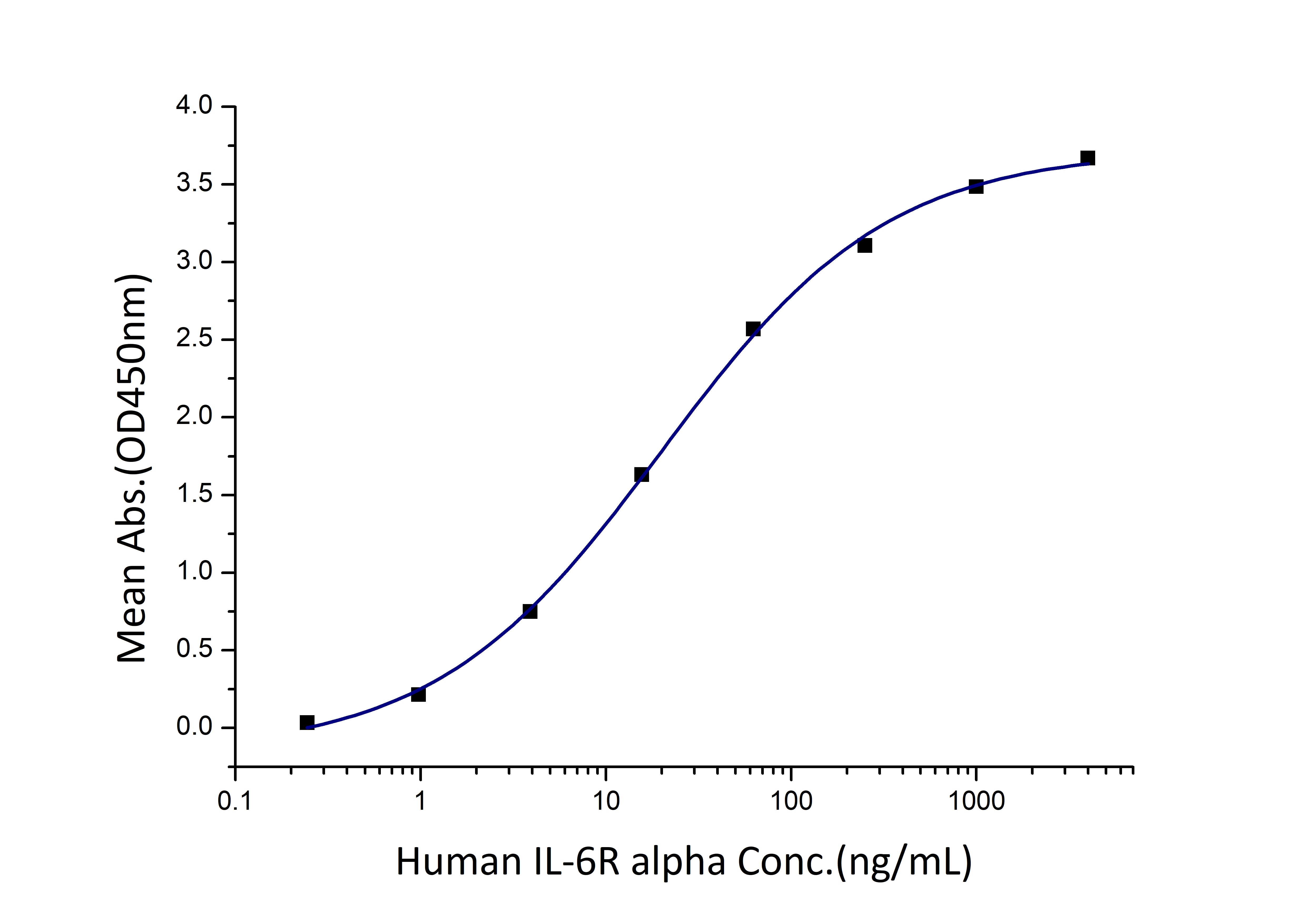Recombinant Human gp130/IL6ST protein (His Tag)
Species
Human
Purity
>95 %, SDS-PAGE
Tag
His Tag
Activity
EC50: 10-40 ng/mL
Cat no : Eg0654
Validation Data Gallery
Product Information
| Purity | >95 %, SDS-PAGE |
| Endotoxin | <0.1 EU/μg protein, LAL method |
| Activity |
Immobilized Human gp130 (His tag) at 1 μg/mL (100 μL/well) can bind Human IL-6R alpha (Myc tag, His tag) in the presence of Human IL-6 (0.1 μg/well) with a linear range of 10-40 ng/mL. |
| Expression | HEK293-derived Human gp130 protein Glu23-Ile618 (Accession# P40189-1) with a His tag at the C-terminus. |
| GeneID | 3572 |
| Accession | P40189-1 |
| PredictedSize | 68.8 kDa |
| SDS-PAGE | 80-100 kDa, reducing (R) conditions |
| Formulation | Lyophilized from 0.22 μm filtered solution in PBS, pH 7.4. Normally 5% trehalose and 5% mannitol are added as protectants before lyophilization. |
| Reconstitution | Briefly centrifuge the tube before opening. Reconstitute at 0.1-0.5 mg/mL in sterile water. |
| Storage Conditions |
It is recommended that the protein be aliquoted for optimal storage. Avoid repeated freeze-thaw cycles.
|
| Shipping | The product is shipped at ambient temperature. Upon receipt, store it immediately at the recommended temperature. |
Background
Glycoprotein 130 (gp130, also known as IL6ST, CD130 or IL6-beta) is a ubiquitously expressed, signal-transducing receptor that serves as the signal transduction unit for IL-6 family of cytokines, including IL-6, IL-11, IL-27, leukemia inhibitory factor (LIF), OSM, ciliary neurotrophic factor (CNTF), cardiotrophin 1 (CT-1), and cardiotrophin-like cytokine (CLC). These cytokines signal through the gp130/Jak/STAT pathway. Binding of IL-6 to IL-6R induces gp130 homodimerization and formation of a high-affinity receptor complex, which activates Jaks. That causes phosphorylation of gp130 tyrosine residues which in turn activates STAT3. gp130 is a type I transmembrane protein, and can also exist as a soluble form (sgp130). sgp130 binds to sIL-6R/IL-6 complexes and prevents their interactions with membrane-anchored gp130 on target cells.
References:
1. Taga T, Kishimoto T. (1997). Annu Rev Immunol. 15:797-819. 2. Montero-Julian FA, et al. (1997). Clin Cancer Res. 3(8):1443-1451. 3. Heinrich PC, et al. (1998). Biochem J. 334 (Pt 2)(Pt 2):297-314. 4. Silver JS, Hunter CA. (2010). J Leukoc Biol. 88(6):1145-1156.


